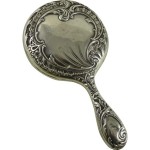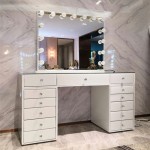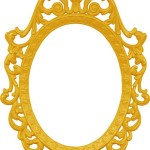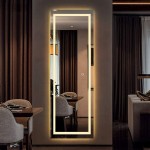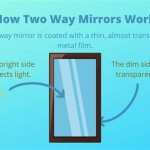Mother of Pearl Mirror DIY: A Guide to Crafting Iridescent Elegance
Mother of pearl, also known as nacre, offers a unique iridescent beauty, making it a desirable material for decorative items. A mother of pearl mirror adds a touch of elegance and sophistication to any space. This guide provides instructions for creating a custom mother of pearl mirror using readily available materials and techniques.
Several options exist for sourcing mother of pearl for this project. Mother of pearl tiles, often used for backsplashes or inlays, provide a readily available and uniform option. These tiles come in various sizes and shapes, allowing for creative arrangements. Alternatively, loose mother of pearl pieces, which may require more effort in arranging and adhering, offer a more organic, less structured look. These can often be found at craft stores or online marketplaces.
The mirror itself forms the base of the project. Round mirrors are a popular choice for mother of pearl embellishment, creating a sunburst or floral effect. Square or rectangular mirrors offer a different aesthetic and lend themselves well to geometric designs. When selecting a mirror, consider the overall size and the desired coverage of mother of pearl. A simple, frameless mirror is ideal for this project, providing a clean surface for the mother of pearl application.
Before beginning the embellishment process, ensure the mirror's surface is clean and free of dust or debris. A gentle cleaning with glass cleaner will prepare the surface for optimal adhesion. Planning the layout of the mother of pearl pieces is crucial for achieving a visually appealing result. For tile applications, a pre-arranged layout on a flat surface allows for adjustments before applying adhesive. With loose pieces, a sketch on paper can guide the placement process.
Adhesive selection is critical for the longevity and stability of the finished mirror. Construction adhesive suitable for glass and tile provides a strong bond. Alternatively, a high-quality epoxy offers excellent adhesion and durability. When applying the adhesive, follow the manufacturer’s instructions carefully, ensuring proper coverage and drying time. For tile application, apply adhesive to the back of each tile, ensuring even distribution to prevent gaps or weak points.
The application of the mother of pearl pieces requires precision and patience. Starting from the outer edge or a central point, carefully place each piece according to the planned layout. Maintain consistent spacing between pieces for a uniform appearance. Gentle pressure ensures proper adhesion to the mirror surface. For loose pieces, work in small sections, allowing the adhesive to set before proceeding to the next area.
After placing all mother of pearl pieces, allow the adhesive to dry completely according to the manufacturer's instructions. This curing time is essential for achieving maximum bond strength. Once the adhesive has cured, inspect the mirror for any loose or misaligned pieces. If necessary, carefully apply additional adhesive to secure any loose elements.
Grouting is typically not required for mother of pearl tile applications, as the tiles are typically placed edge to edge. However, if using loose pieces with wider gaps, grouting can enhance the overall aesthetic and provide additional stability. Choose a grout color that complements the mother of pearl and the surrounding décor. Apply the grout carefully, ensuring complete filling of the gaps between the pieces. Remove excess grout promptly with a damp sponge, being careful not to dislodge the mother of pearl.
Sealing the finished mirror is an optional step that can provide added protection and enhance the longevity of the finished piece. A clear sealant designed for use with mother of pearl and glass can help prevent discoloration and protect the surface from moisture. Apply the sealant according to the manufacturer's instructions, ensuring even coverage across the entire surface.
Hanging the finished mother of pearl mirror requires appropriate hardware. Consider the weight of the mirror and the wall material when selecting hanging hardware. D-ring hangers or wire hangers are common choices for mirror installation. Ensure the chosen hardware is securely attached to the back of the mirror and provides stable support.
A mother of pearl mirror serves as a beautiful and unique decorative element, adding a touch of natural iridescence to any room. The process, while requiring patience and precision, yields a rewarding result. By following these steps and adapting the techniques to suit individual design preferences, a custom-crafted mother of pearl mirror can become a cherished piece of home décor.

Mother Of Pearl Tile Adds Shimmer Interest Luxury Surprise To Baths Kitchens Etc Bathroom Mirror Frame Diy

Blue Ombre Mother Of Pearl Mirror House Turquoise Frame Diy

How To Make A Custom Tiled Mirror The Stonybrook House

Led Mother Of Pearl Mirror Дизайн Стекло Рама для зеркала

Large Tear Drop Mother Of Pearl Mirror Decor Wall

Diy Wooden Ball Mirror Zevy Joy

How To Make A Custom Tiled Mirror The Stonybrook House

How To Make A Beautiful Oyster S Mirror

White Square Groutless Pearl S Tile Diy Bathroom Remodel Mirror Makeover Frames

Mother Of Pearl Mirror Tiktok Search

